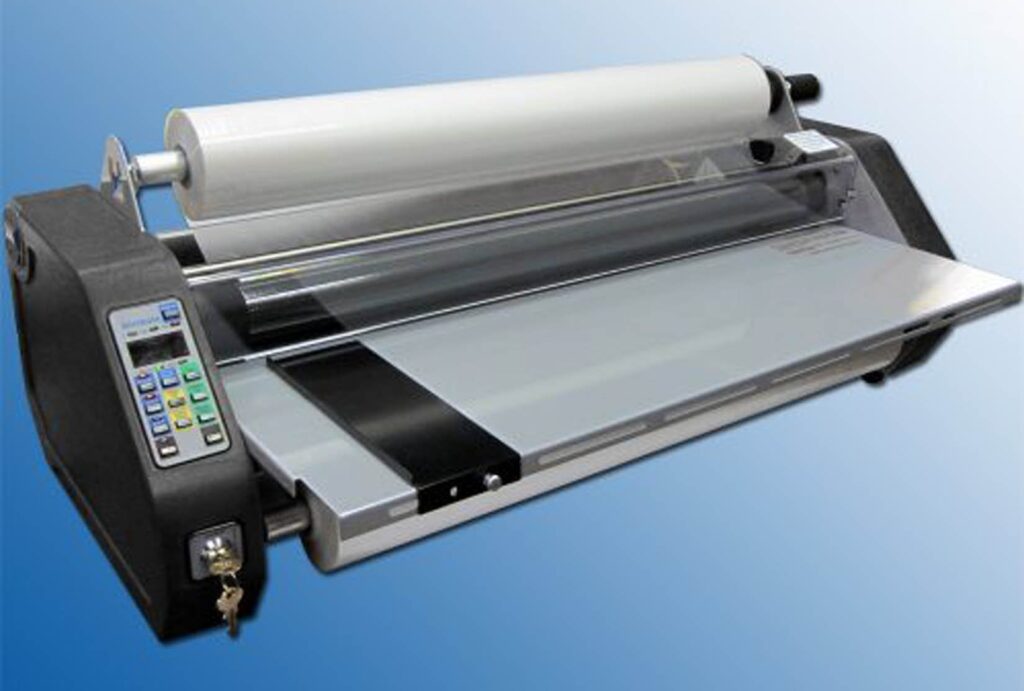Lamination machines have become essential tools across various sectors, offering enhanced durability and protection for printed materials. These machines utilize a thin layer of plastic film to encapsulate documents, graphics, and other items, making them resistant to moisture, dirt, and wear. In this article, we’ll explore the innovative applications of lamination machines in different industries, highlighting their versatility and benefits, including the use of the 27 inch lamination machine for larger projects.
What is a Lamination Machine?
A lamination machine applies a protective layer of plastic film to documents and other materials. This process can be done using heat or cold, depending on the type of laminating film and machine used. The result is a glossy or matte finish that enhances the appearance of the item while providing essential protection.
Types of Lamination Machines
Lamination machines come in various sizes and configurations, catering to different needs. Common types include:
- Cold Laminators: These use adhesive films without heat, making them suitable for heat-sensitive materials.
- Hot Laminators: These require heat to activate the adhesive in the laminating film, providing a strong bond and a professional finish.
- Wide Format Laminators: For larger projects, such as banners and posters, wide format machines (like the 27 inch lamination machine) are available.
Applications of Lamination Machines Across Industries
1. Education
In the education sector, lamination machines are invaluable for protecting materials that are frequently handled. Teachers and educators use laminated materials for:
- Visual Aids: Charts, posters, and flashcards can be laminated for durability and repeated use in classrooms.
- Student Work: Laminating projects or assignments not only preserves them but also showcases student achievements.
- Safety and Instructional Signage: Laminated safety signs in laboratories and classrooms ensure that they remain visible and intact over time.
2. Business and Marketing
Businesses leverage lamination machines for various marketing materials that require a professional appearance and protection:
- Brochures and Flyers: Laminating promotional materials enhances their durability and visual appeal, making them more likely to attract customers.
- Business Cards: Laminated cards withstand wear and tear, maintaining their professional appearance longer than unlaminated cards.
- Signage: In retail environments, laminated signs can withstand the elements and maintain their clarity, which is crucial for effective communication.
3. Food Industry
In the food industry, hygiene and presentation are paramount. Lamination machines help in:
- Menu Protection: Laminating menus protects them from spills and stains, making them easier to clean and maintain.
- Packaging: Some food packaging applications use laminated films to preserve freshness while providing visual appeal on store shelves.
4. Health and Safety
Laminated materials play a critical role in health and safety protocols across various industries:
- Instructional Materials: Laminated instructions for machinery, safety procedures, and emergency protocols remain legible and intact even in challenging environments.
- Patient Information: In healthcare settings, laminated information sheets ensure that patients receive important information that is protected from spills and wear.
5. Crafting and Hobbies
The crafting community utilizes lamination machines for creative projects:
- Scrapbooking: Crafters laminate photos and memorabilia to preserve them while adding a polished look.
- DIY Projects: Many crafters use lamination for custom bookmarks, tags, and other personalized items.
6. Art and Photography
For artists and photographers, lamination machines are essential for showcasing work:
- Artwork Protection: Laminating prints and original artwork protects against fading, moisture, and physical damage.
- Framing Options: Laminated photographs can be framed without glass, offering a sleek look while reducing glare.
7. Construction and Architecture
In construction, laminated materials are used for:
- Blueprints and Plans: Laminating architectural plans protects them from damage on job sites, ensuring that they remain clear and usable.
- Safety Information: Laminated safety procedures and guidelines are essential for compliance and safety on construction sites.
8. Event Planning
Event planners utilize lamination machines for a range of materials:
- Event Signage: Laminated signs can be used for directional signs, schedules, and important information at events.
- Programs and Brochures: Laminating these materials ensures they withstand handling by guests and remain in pristine condition.
Advantages of Using Lamination Machines
1. Increased Durability
Laminated materials are resistant to moisture, dirt, and physical damage, making them last longer than unlaminated items. This durability is crucial in environments where materials are frequently handled or exposed to elements.
2. Enhanced Appearance
Lamination provides a professional finish, enhancing the visual appeal of documents and graphics. This is particularly important for marketing materials where first impressions matter.
3. Ease of Cleaning
Laminated surfaces can be easily wiped clean, making them ideal for educational and food service applications where hygiene is essential.
4. Versatility
Lamination machines can accommodate a wide range of materials, including paper, cardstock, and some flexible materials, making them suitable for various applications across different industries.
Choosing the Right Lamination Machine
Factors to Consider
When selecting a lamination machine, consider the following:
- Size and Capacity: For larger projects, such as banners or signage, a wide format machine like the 27 inch lamination machine may be necessary.
- Type of Lamination: Determine whether you need a hot or cold laminator based on the materials you will be using.
- Speed and Efficiency: Look for machines that can handle your volume needs efficiently without compromising on quality.
Maintenance Tips
To keep your lamination machine in optimal condition:
- Regular Cleaning: Remove any adhesive buildup and dust from the machine to ensure smooth operation.
- Check for Wear: Regularly inspect the rollers and other components for wear and replace them as needed.
- Follow Manufacturer Guidelines: Always adhere to the manufacturer’s instructions for maintenance and operation.
Conclusion
Lamination machines play a crucial role in enhancing the durability, appearance, and functionality of materials across various industries. Their innovative applications—from education and marketing to food service and event planning—demonstrate their versatility and importance. Whether you opt for a standard model or a specialized machine like the 27 inch lamination machine, investing in quality lamination equipment can significantly elevate your projects and protect your materials for the long term. As businesses and individuals continue to recognize the benefits of lamination, these machines will undoubtedly remain essential tools in many sectors.



